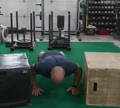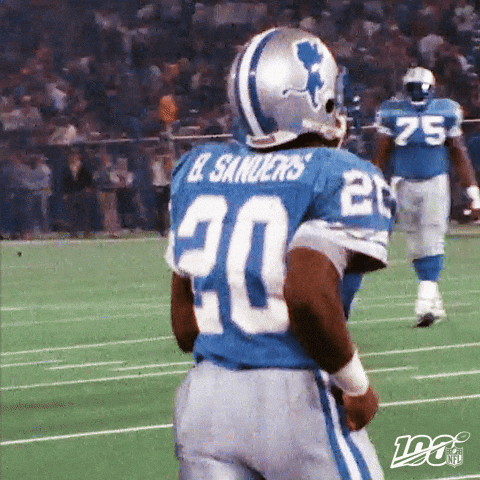How to be a real life superhero
FREE SPEED & POWER WORKOUT!
Download by entering below

Best Exercises To Increase Power Level
Trying to increase our power output or power levels, let’s start by thinking about a video game and seeing the player character’s power meter increasing across the top of the screen. Translating video games to athletes, we have athletes who are strong with a tremendous amount of speed which leads to a large amount of power output, and force. Athletes with high power levels execute a movement with a massive amount of force at high speeds.
Athletes need to have Type 2A and type 2X muscle fibers to see a massive amount of power output. What’s ironic here is that athletes like bodybuilders have a large percentage of 2X muscle fibers. So do gymnasts and track and field jumpers. These are all sports where the athletes have a large amount of 2A and 2X muscle fibers. That’s where we want our focus in training to be: developing 2A and 2X muscle fibers.
1. PVC Pipe Walks
The first key is to warm up properly. We have to increase the neural drive, and stability, and work through movements that increase the body temperature. That’s where PVC pipe walks come into play.
Athletes can just stand on the PVC pipe in place. Better yet, athletes can walk the PVC pipe forwards and backward. Just make sure to feel the toes working accordingly with the knees tracking well. Walking on the PVC pipe will improve the neural drive primarily from being on an unstable surface.
Do this for 5 to 10 minutes.
2. Hydro Bag Swings
Continuing with the warm-up, pick up a hydro weight and do something simple, like a single leg RDL into a hip lock, swinging the bag from the side to in front of the body. It is a dynamic movement that lights up the hamstrings, lower back, and posterior chain.
Again, do this for 5 to 10 minutes. Make sure to do it to each side.

3. Bunny Hops Onto A Box
The box does not need to be high at all. A 12” box is plenty high to warm up. Nothing crazy here. The key with this jump is to land on the box and rebound off the ground to get that reactivity going. The heel should never touch the ground upon rebounding to jump onto the box. Three sets of 5 to 10 reps will get the job done.
4. Command Driven Pause Front Squat / Depth Drop To Box Jump
With the warm-up all done, we can move on to more power development movements. Starting with the front squat, we want to pause at the bottom and wait for our coach to give us a command to squat quickly out of the hole. Do this for 3 to 5 reps.
From here we rest 2 minutes before going to implement some contrast methods to do a slight depth drop, about 10”, into a high box jump. We want the feeling from driving out of the hole in the front squat position to carry over to the box jump. We only need to perform three jumps.
Do the combination of these two movements for five sets and feel the drastic increase in power levels.
5. Jump Step Up
I like to focus on glutes and quads because it helps with the drive phase of sprinting and, if done with a barbell (no jump needed) will increase strength levels, but the jump step up will also increase an athlete’s reactive abilities.
Some athletes will do a little hop before doing the jump step up. This indicates an athlete's reactive strength isn’t there yet. As coaches, we want to cue touch and go. Or, we can use the extra false step for a bigger drive. Do the jump step up for two to three sets of three to five reps.

6. Hurdle Hops
I was lucky enough when younger to get my hands on a VHS cassette of Werner Gunthor’s Training Methods. In the video, Werner did a ton of hurdle hops. I believe he did all those hurdle hops because it increases the neural drive, ability to react, and the height and length of the jump can be changed. No matter what, the body is forced to react while performing a challenging movement.
Hurdle hops are great at boosting power levels. Hurdle hops are so effective for increasing power levels, every athlete I train and program for has hurdle hops in their programming when peaking. Hurdle hops can be performed in several ways, really only being limited by creativity.
We usually have four or five hurdles in a row. Work slowly in raising the hurdle height and focus on getting the hips as high as possible. Three sets of hurdle hops can do the trick.
7. Command Driven Pause DB Bench Press / Depth Drop Push-Ups
Similar to the front squat, we want to lower the DBs to the chest, pause, and have a coach, friend, or training partner give a command to explode up. The key is to go heavy with the movement. It is a great movement for wrestlers, throwers, football players, and even baseball players trying to stabilize their shoulder girdle. We want to hit the movement for 3 to 5 reps.
We then rest for two minutes and go to the next exercise.

The depth drop push-ups are performed using two boxes of equal height. Ideally, we drop off the boxes, land with our hands, and explode right out of the push-up back up to the boxes. If unable to do it rapid-fire, pause in the depth drop before performing the push-up back onto the boxes. If more scaling is needed, just drop down and catch in the push-up position before just walking the hands up to the boxes.
The depth drop push-up will blow up an athlete’s bench press. Without question, this movement increases power levels.

8. Explosive Sled Drives / Sander’s Cut Into Mini Hurdle Hops
The first thing we are going to do is take two steps on each leg as explosively as possible. The whole goal is to focus on DRIVING! Push the whole planet away to get more energy to move forward. We are only taking four steps total. We are focusing on acceleration out of the start. The load on the sled needs to be light. In the four strides, we want to drive as far as possible.
The Sander’s cut is a chunking method we use at Garage Strength to try to emulate and teach the cutting of Barry Sanders. And yes, we know, Barry Sanders is a once-in-a-lifetime athlete; however, we believe that through reflexive strength work, the capability to perform such movements can be improved.

That out of the way, the movement begins with the Sander’s Cut. Think about stepping into a quarter lunge with the lead leg. The quad is perpendicular to the mini hurdles but the foot is facing toward the hurdles (as much as possible) to create the 90-degree cut. As we decelerate, our center of mass is behind the foot. The back line does not go down. It is also important to remember that dynamic trunk control is imperative to perform this movement.
After hitting the Sander’s cut, we hit single-leg bounds over a series of mini hurdles. Do the movement for three sets of 3 to 5 reps on each leg. The combination of movements will, like all the other movements, drastically improve power levels.
Recap
Power is strength and speed in combination. We need to understand command-driven tasks with deceleration taking place to better absorb energy. We also know we want to train in a way to develop Type 2A and Type 2X muscle fibers. Using all the aforementioned exercises helps in the development of the needed muscle fibers and, in turn, the explosiveness desired by every competitive athlete out there.
Related Posts
Blog Topics

Yo, It's Dane
Welcome to the Garage Strength Blog, where it is my goal to provide you with the experience and knowledge I've gained in the strength and conditioning world over many years of learning from both successes and failures. I train elite-level athletes in a multitude of sports from the high school to professional levels, already producing 5 Olympics and 30+ National Champions. If you want to be the next champion I train, check out my strength programs below!
Start Training With Me

Join for free educational videos EVERY WEEK on strength coaching and athletic performance



